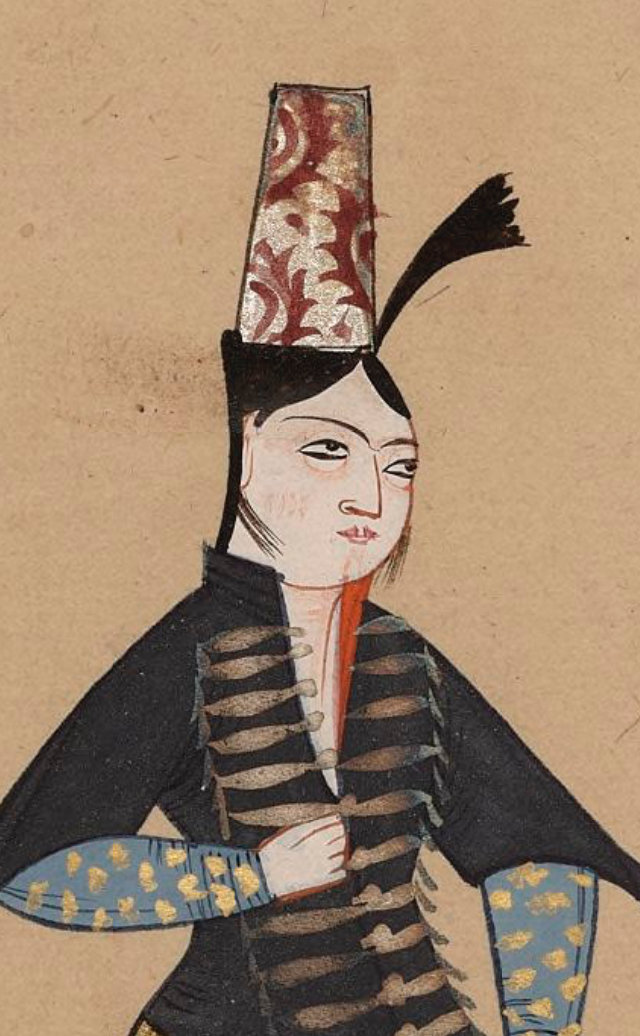The çember or çenber, literally “circle,” is a band of folded fabric wrapped around a woman’s pillbox-shaped hat. It can be decorative, or when a woman wears a hat veil (makrama), it’s tied over top of the makrama to hold the makrama on.
Continue reading
The makrama (or makrame) is a short veil, usually white, that goes over the top of a woman’s hat and ties under her chin to hold the hat on. It’s commonly depicted hanging loose and untied, the better to show off the decorative embroidery along the edges.
Continue reading
The gömlek was a cotton, linen, silk (if you were female), or occasionally woolen shift worn by both men and women next to the skin. Women’s gömleks were usually shin-length to ankle-length, depending on the fashion. Men also wore long gömleks with their full-length kaftan, or a hip-length version of the gömlek with…
Continue reading
Like arakçın, “arakiyye” started as a generic word for any hat, especially for the type of hat that could be used as a base for a turban. By the end of the 16th century, it had become a generic word for a woman’s hat, regardless of style.
Continue reading

In mid-16th-century sources, “arakçın” is simply a word for any hat. By the end of the century it appears to have attached to women’s hats in particular, but it describes the pillbox hats of the 16th century, the small cones of the turn of the century, and the sugarloaf hats…
Continue reading
The ferace is an unfitted full-length overcoat with loose full-length sleeves. It was extremely popular with both men and women–for women as a modesty covering, and for men as a less stylish, but less expensive and more practical, alternative to the coat with hanging sleeves. In modern scholarship men’s ferace…
Continue reading
The yelek is a hip-length jacket that men wore over their gomlek and zıbın and under their belt and overcoat as a formal layer. It was a less cumbersome, less fabric-intensive, and therefore less high-status replacement for the kaftan. Soldiers, cooks, baristas, porters, and other men who worked with their…
Continue reading
“Hırka” was one of several names for a short, loose jacket worn by dervishes. The word appears to be post-period. Due to the vast, roiling confusion over the word for the hip-length underjacket, some modern scholars appropriated “hırka” to describe it. The correct 16th-century term is zıbın.
Continue reading
The entari, the Turkish pronunciation of the Greek anteri, was not a period garment at all. The term was barely mentioned in Istanbul-area court records until the 1630’s or 1640’s, when it appeared in addition to–not as a replacement for–other words. And when we can pin down which garment it…
Continue reading
The zıbın was a hip-length jacket that both men and women wore over their gömleks and under their kaftans. It was an informal layer, always covered in public by one of the formal robes (a kaftan for women, and a kaftan, yelek, or knee-length robe for men). Women, who spent most…
Continue reading




